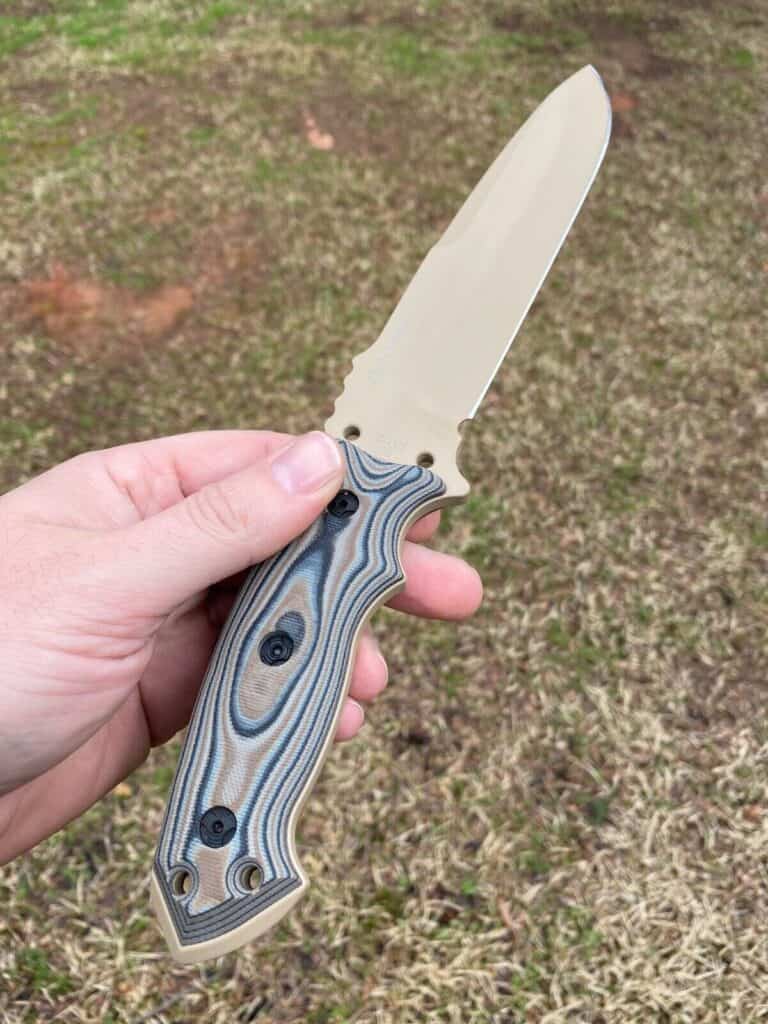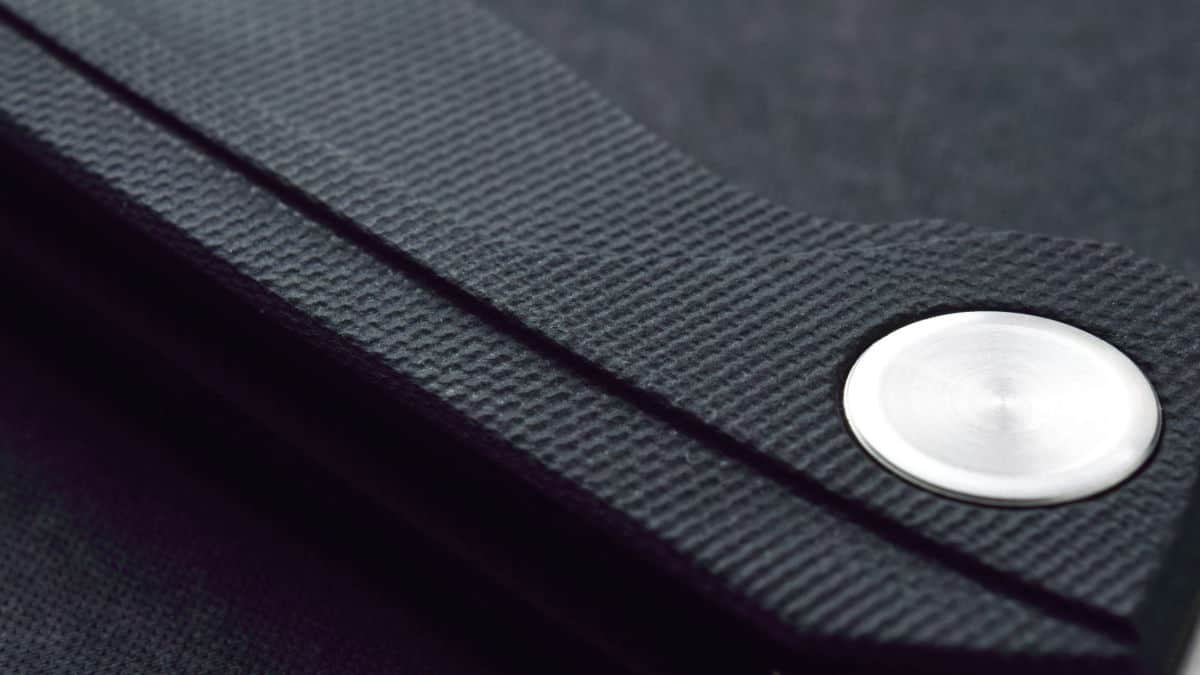As an Amazon Associate I earn from qualifying purchases.
G10 is a composite material that has become increasingly popular in the world of knives, specifically for knife handles. Composed of glass fiber and epoxy resin, G10 is produced through a process that involves layering, mixing, pressing, and heating the resin-soaked fiberglass cloth. This results in a material that is not only strong and durable but also lightweight, making it an ideal choice for knife enthusiasts and professionals alike.
The use of G10 in knife handles offers several advantages, including its ability to maintain a solid grip even when wet, making it safe and reliable in a variety of conditions. The material is also highly resistant to heat, chemicals, and moisture, contributing to its longevity and overall durability. Additionally, G10 can be customized to feature various colors and textures, allowing knife users to personalize their tools with unique aesthetics. With this combination of practical and aesthetic benefits, it’s no wonder that G10 has become a popular choice for knife handle material in recent years.
What is G10
Composition
G10 is a composite material made of epoxy resin and glass fiber, specifically a glass-based epoxy resin laminate. It consists of multiple layers of glass cloth, which are saturated with epoxy resin and then cured under high pressure and temperature. The resulting material is durable, lightweight, and moisture-resistant, making it an ideal choice for knife handles.
History
G-10 has its roots in industrial laminates, which were first developed by George Westinghouse in the early 20th century. Westinghouse initially used phenolic formaldehyde resins as the base for these laminates, but later advancements in material science led to the development of epoxy resins and their incorporation into composite materials. The glass fibers used in G-10 offered a significant improvement over carbon fibers, providing greater strength and resistance to wear.
Properties
The properties of G10 make it a popular choice for knife handles and other applications where durability, strength, and moisture resistance are crucial. Some of its key properties include:
- High tensile strength: The combination of glass fiber and epoxy resin creates a material with excellent tensile strength, which helps knife handles withstand heavy use without breaking or deforming.
- Dimensional stability: G10 remains stable under a wide range of temperatures (-196℃ to 300℃) and does not shrink or swell, ensuring that the knife handle maintains its shape and size over time 1.
- Moisture resistance: The epoxy resin in G10 acts as a barrier to moisture, making the material resistant to water absorption and humidity.
- Chemical resistance: G10 is resistant to many chemicals, including acids and solvents, which protects the knife handle from damage caused by exposure to harsh substances.
- Lightweight: Although G10 is strong and durable, it is also relatively lightweight, making it suitable for use in knife handles without adding unnecessary bulk.
G10 for Knives

G10, also known as G-10 or Garolite, is a resin-based composite material that has become a popular choice for knife handles. Constructed using layers of glass fiber sheets, it provides increased strength and a lightweight feel, making it perfect for a variety of knives. In this section, we will explore the benefits and drawbacks of G10 as a material for knife handles.
Benefits
- Durability: G10 is known for its high tensile strength, compressive strength, and dimensional stability. This means it can withstand a wide range of temperatures, from -196℃ to 300℃, without shrinking or swelling. This extreme durability makes G10 an ideal option for users who require a rugged knife handle that can endure harsh conditions.
- Low Maintenance: G10 is an excellent choice for those who want a low-maintenance handle material, as it is water-resistant and does not require the same level of care as more traditional materials like wood or bone.
- Grip: The textured surface of G10 knife handles provides users with a secure grip, ensuring that they maintain control even during heavy use or in wet conditions.
- Versatility: G10 is available in a wide range of colors, designs, and patterns, making it easy for knife makers to create unique and eye-catching handle options.
- Weight: Due to its lightweight characteristics, G10 is perfect for those who prefer a lighter knife without sacrificing strength, durability, or grip.
Drawbacks
- Price: G10 knife handles tend to be more expensive than handles made from traditional materials like wood or bone, which may deter some buyers seeking a more budget-friendly option.
- Appearance: Though available in many colors and designs, G10 may not have the same warmth and character as natural materials, such as wood or bone. Some users prefer the organic feel and appearance of these more traditional materials.
In summary, G10 knife handles are an excellent choice for those seeking a durable, low-maintenance, and versatile option for their knives. With high strength, water resistance, and a secure grip, G10 is ideal for users who demand a reliable and long-lasting handle material. However, its price and appearance may not be suitable for everyone, so it’s essential to weigh the benefits and drawbacks before making a decision.
Knife Handle Materials Comparison
When it comes to knife handles, the choice of material can greatly affect the overall performance, durability, and aesthetic appeal of the finished product. This section will explore different knife handle materials and compare their properties, advantages, and disadvantages.
Other Composite Materials
G10 is a popular composite material used for knife handles, known for its strength, durability, and water resistance. G10 is a type of fiberglass laminate made from layers of glass cloth, soaked in epoxy resin, and cured under pressure. Its qualities make it an excellent option for demanding applications such as tactical and kitchen knives.
Micarta is another composite material commonly used for knife handles. It is made from layers of paper, canvas, or linen soaked in phenolic resin, which are then pressed and cured. Compared to G10, Micarta provides a slightly softer and warmer feel, with more natural colors and patterns available. However, it is less resistant to water and may require more maintenance.
Carbon fiber is a premium choice for knife handles, prized for its light weight, high strength, and sleek appearance. It is made from carbon fibers bound together by a resin, cured under high pressure and temperature. While offering impressive strength-to-weight ratio, carbon fiber can be more expensive than G10 and Micarta and may be more prone to chipping or cracking under extreme stress.
Natural Materials
Wood is a traditional material used for knife handles, valued for its beauty, warmth, and ease of shaping. Many wood types are available, ranging from inexpensive domestic wood like maple or walnut to exotic burl wood with intricate grain patterns. Wood handles can be comfortable to hold and offer a timeless aesthetic. However, they are generally less rugged, require more care, and may be susceptible to moisture damage compared to composite materials.
Bone, often used in historical or ornamental knives, provides an organic look and feel that is difficult to replicate with other materials. Bone handles vary in color and pattern, and can even be carved or embellished for an extra touch of elegance. Like wood, bone requires more maintenance to protect it from drying out or cracking, and may not be as strong or water-resistant as G10, Micarta, or carbon fiber.
In summary, when choosing a knife handle material, it is important to consider factors such as the intended use, desired appearance, and maintenance requirements. While G10, Micarta, and carbon fiber provide impressive strength, durability, and water resistance, natural materials like wood and bone offer a warm, comfortable feel and timeless beauty. Ultimately, the choice of material will largely come down to personal preference and what best fits the user’s needs.
G10 Applications and Care
G10, a high-strength and lightweight material, is commonly used in the production of knife handles. Comprised of woven fiberglass cloth impregnated with epoxy resin, G10 is known for its durability and dimensional stability, making it suitable for various applications and requiring minimal care.
Other Uses
Besides knives, G10 is found in a range of products, such as gun grips and handgun grips. Its resistance to moisture and temperature changes makes it ideal for use in structural supports, mechanical insulation, gears, washers, spacers, and precision machined parts. Additionally, G10 is utilized in electro-mechanical assemblies, woven mesh, printed circuit boards, and electronics, showcasing its versatility in the industrial domain.
Maintenance and Care
Despite its wide range of applications, G10 is a low-maintenance material. It is moisture-proof, impervious to water, and can withstand temperature fluctuations between -196℃ and 300℃ without shrinking or swelling.
Taking care of G10 knife handles or other products made of this material involves regular inspection for cracks or gaps and occasional cleaning with a mild soap and water. G10 can be easily shaped and ground, allowing for customization according to user preferences. Furthermore, it is available in a huge variety of colors, ensuring aesthetic appeal alongside practicality.
In summary, G10 is a versatile and durable material used in the making of knife handles, gun and handgun grips, and various industrial applications. It requires minimal care and offers water resistance, making it suitable for use in numerous environments. With its customization possibilities and wide range of colors, G10 is an ideal choice for those seeking a reliable, low-maintenance material.
Do Sheepsfoot Blades Have A Purpose? (Cuz They’re Ugly…)
Spetsnaz Machetes – Blades Of The Russian Special Forces
What Is The Actual Purpose Of A Spear Point Knife Blade?
CRKT CEO Review – Coolest, Most Worthless Knife Ever?
How Sharp Is A Scalpel? (Is It Sharper Than A Razor?)
Can You Shave With A Knife? (Yes, Here’s How)
As an Amazon Associate I earn from qualifying purchases.







